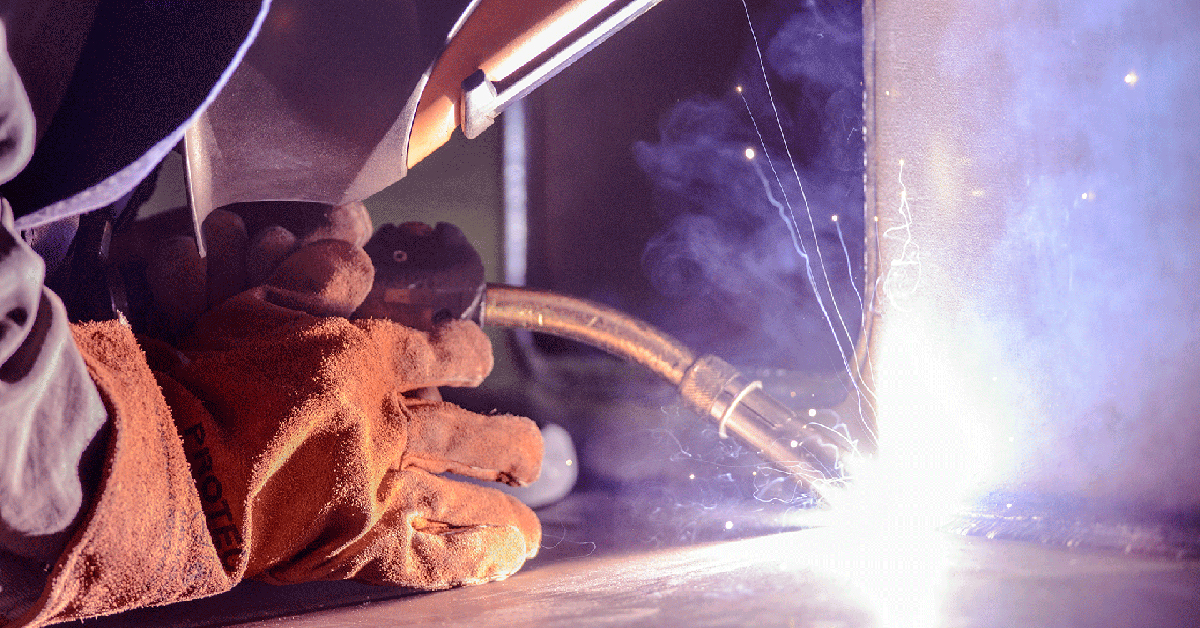Preventing Weld Undercut Demystified: Strategies for Success
Preventing Weld Undercut Demystified: Strategies for Success
Blog Article
Recognizing the Causes and Solutions for Undercut Welding in Steel Fabrication Procedures
In the realm of metal manufacture processes, the incident of undercut welding positions a considerable obstacle that demands a thorough understanding of its causes and sensible remedies. The intricate interaction of various elements throughout welding procedures can lead to this unwanted phenomenon, affecting the architectural integrity and total high quality of the bonded joints - Preventing weld undercut. By studying the source of undercut welding and discovering reliable restorative steps, fabricators can elevate the requirement of their handiwork and guarantee the production of perfect steel elements
Common Reasons For Undercut Welding
Frequently forgotten in metal fabrication, undercut welding happens due to numerous elements that demand thorough attention and knowledge to be efficiently reduced. Additionally, improper welding strategies, such as making use of the incorrect welding angle or travel rate, can also contribute to damage formation. The selection of welding specifications, such as voltage, existing, and cord feed speed, plays a significant role in the incident of undercut welding.
Influence of Incorrect Welding Parameters
Unreliable welding specifications can significantly endanger the honesty and high quality of bonded joints in steel manufacture processes. The effect of inaccurate welding specifications materializes in numerous methods, causing architectural weaknesses and defects in the welded parts. One vital element influenced by improper welding specifications is the penetration deepness of the weld. Inadequate heat input because of low welding currents or excessively high traveling speeds can lead to poor fusion in between the base metals, causing incomplete joint infiltration and damaged bonds. On the other hand, excessive warmth input brought on by high welding currents or slow-moving travel speeds can cause excessive and burn-through support, creating a brittle and unsteady weld structure. In addition, wrong criteria such as inappropriate voltage settings or incorrect electrode angles can add to irregular weld bead profiles, absence of blend, and boosted chances of issues like damaging. Thorough focus to welding specifications is paramount to make certain the production of high-quality welds with the wanted mechanical properties and architectural stability.
Result of Improper Torch Angle
Improper torch angle in welding procedures can significantly impact the top quality and stability of the final weld joints in metal fabrication procedures. Undercutting is a typical welding flaw where a groove creates along the weld toe, damaging the joint and compromising its structural integrity.
A lantern angle that is too steep can lead to inadequate penetration, insufficient blend, and enhanced spatter. On the other hand, a lantern angle that is also superficial can lead to excessive penetration, burn-through, and distortion of the base material. Preventing weld undercut. Correct torch angle is vital for guaranteeing regular weld top quality, stamina, and appearance
To avoid damaging and various other issues brought on by improper lantern angles, welders need to be trained to maintain the correct lantern angle throughout the welding procedure. Routine surveillance and adjustment of lantern angles throughout welding can help achieve sound welds with minimal flaws.
Duty of Inadequate Welding Strategies

Another facet of inadequate welding techniques is inappropriate weld preparation. Poor cleaning of the base metals, wrong joint design, or not enough side prep work can all add to damage welding. Furthermore, poor shielding gas protection or utilizing the wrong type of gas can result in insufficient blend and the development of undercut problems.
To attend to the role of insufficient welding methods in steel construction processes, it is important to provide extensive training for welders. Appropriate education and learning on welding specifications, joint preparation, and securing gas option can aid prevent undercut welding and guarantee high-grade welds in steel manufacture my website projects.
Efficient Solutions for Undercut Welding
Addressing undercut welding in steel construction needs carrying out reliable options to enhance weld top quality and architectural honesty. One of the main remedies to battle undercut is to readjust welding specifications such as voltage, existing, and travel speed to ensure correct warm input and blend. By fine-tuning these setups, welders can avoid excessive melting of the base metal and filler product, lowering the probability of undercut development.
Additionally, appropriate joint prep work is important in stopping undercut. Making sure clean base steel surfaces complimentary of impurities and using the proper bevel angle can help advertise better weld penetration and decrease the danger of undercut - Preventing weld undercut. Employing appropriate welding strategies, such as weaving or oscillating the lantern, can also help in distributing heat uniformly and loading the weld joint effectively, decreasing the opportunity of undercut defects
Additionally, picking the correct welding consumables, including electrodes and filler metals, is important in mitigating undercut. Using products with proper chemical make-ups and mechanical buildings can contribute to accomplishing sound welds great post to read with very little undercut. Routine examination and quality control measures should also be executed to spot and deal with undercut issues immediately, official statement guaranteeing the total stability of fabricated metal components.

Final Thought
To conclude, recognizing the causes and services for undercut welding in steel manufacture processes is crucial for attaining top quality welds. By addressing usual causes such as inaccurate welding criteria, improper torch angle, and inadequate welding methods, welders can prevent undercutting and make sure solid, long lasting welds. It is vital to take notice of these variables and implement efficient services to boost the general welding process and end product high quality.

Report this page